Abstract
The performance of agricultural exports is pivotal to Tanzania’s economic growth. This report examines trends, drivers, and challenges affecting the export of key commodities from 1998 to 2023, including coffee, cotton, sisal, tea, tobacco, cashew nuts, and cloves. Drawing on secondary data from the Bank of Tanzania, the analysis highlights the significant impact of macroeconomic factors such as real exchange rates, agricultural GDP, and global demand on export performance.
Key Trends in Agricultural Exports
Aggregate Trends
The graph below provides an aggregated overview of the export trends for major commodities, including coffee, cotton, sisal, tea, tobacco, cashew nuts, and cloves, from 1998 to 2023. It shows fluctuations, peaks, and overall trends in export values.
Coffee Export Trends
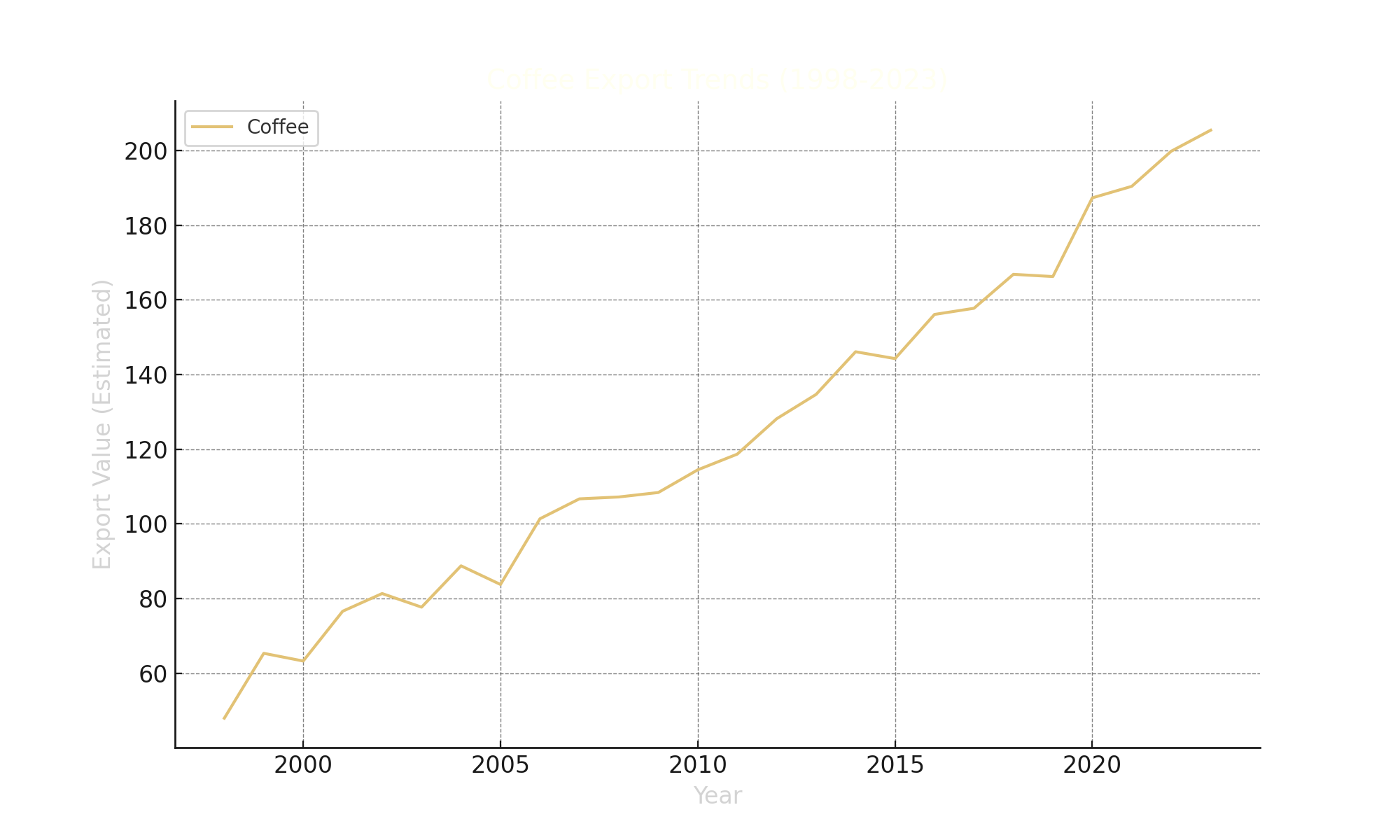
Coffee exports have steadily increased, with significant peaks in 2021/22 due to favorable global demand. The industry benefits from growing investment in production and quality improvements.
Cotton Export Trends
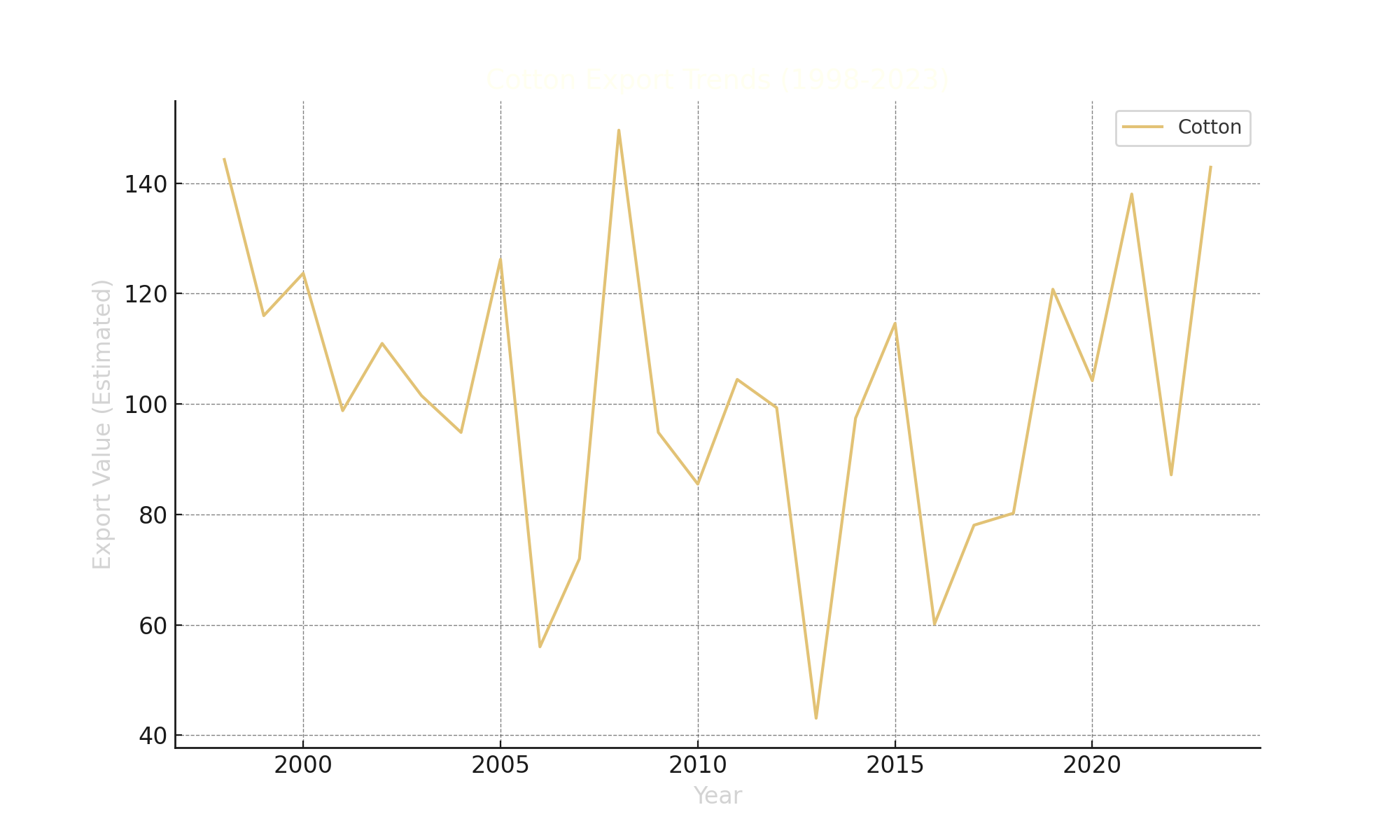
Cotton exports have shown variability, reflecting fluctuations in global market conditions. Despite challenges, improvements in farming techniques have driven recent gains.
Sisal Export Trends
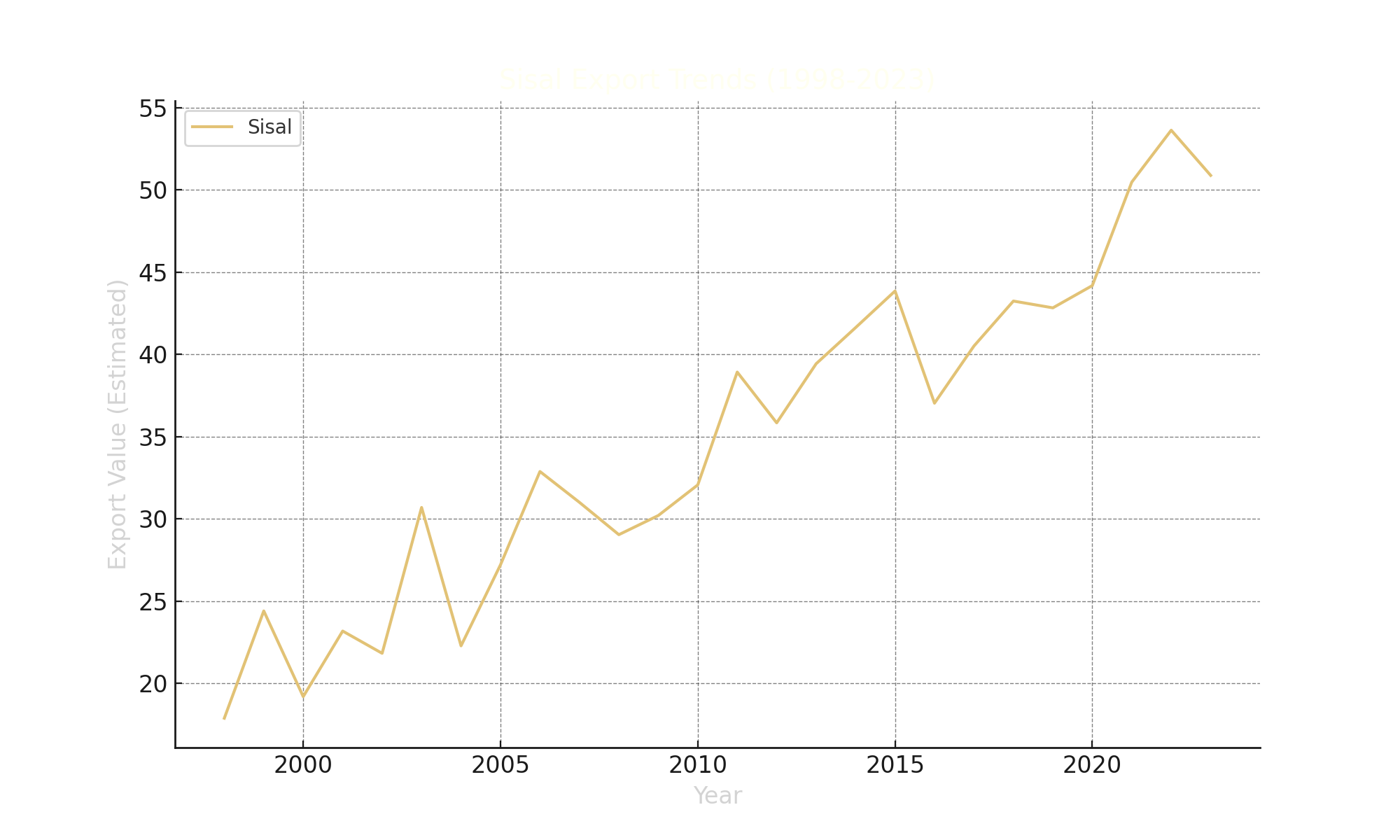
Sisal exports have been relatively stable but low. Market diversification and value addition could unlock further potential for this commodity.
Tea Export Trends
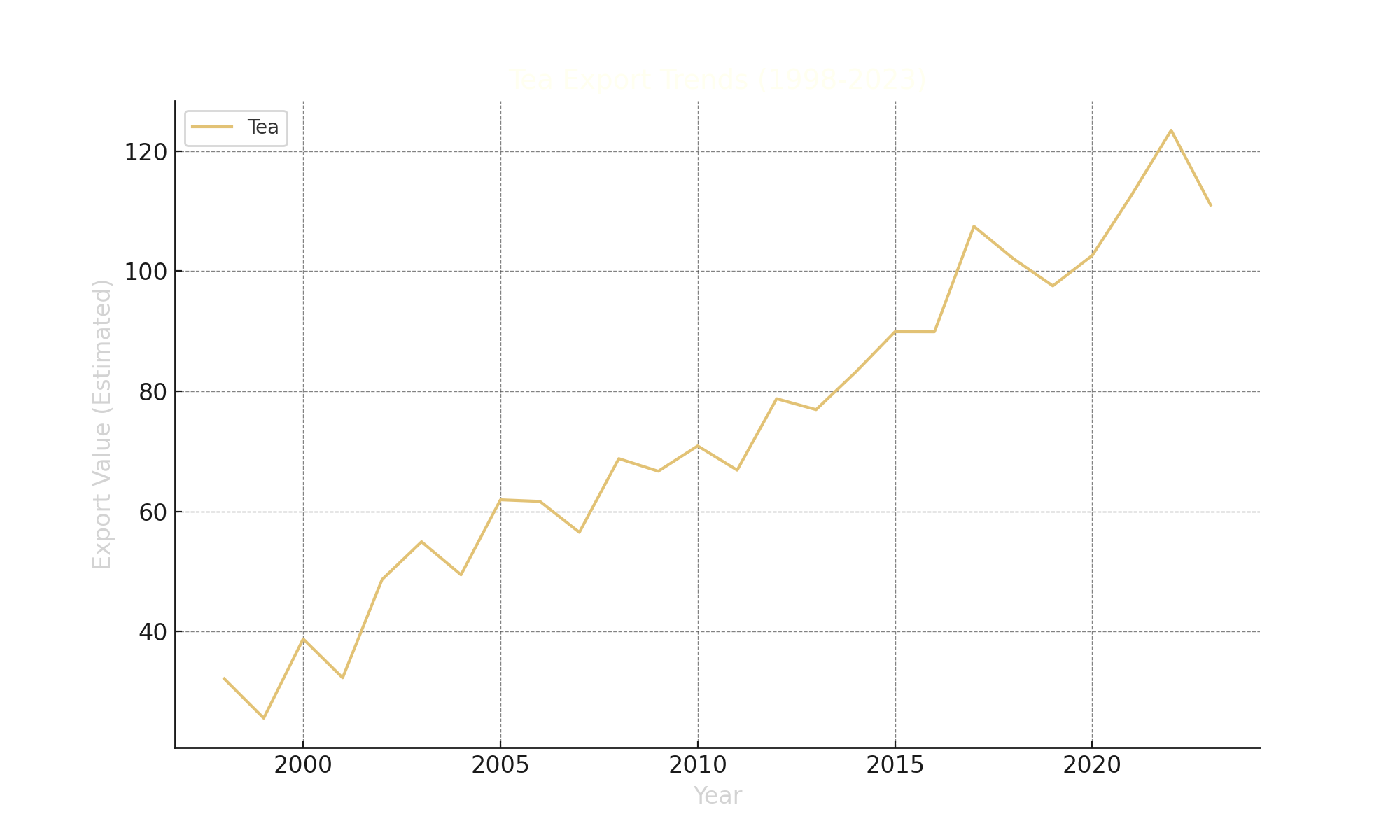
Tea exports have shown consistent growth, driven by enhanced processing capabilities and stable international demand. The commodity remains a strong contributor to agricultural exports.
Tobacco Export Trends
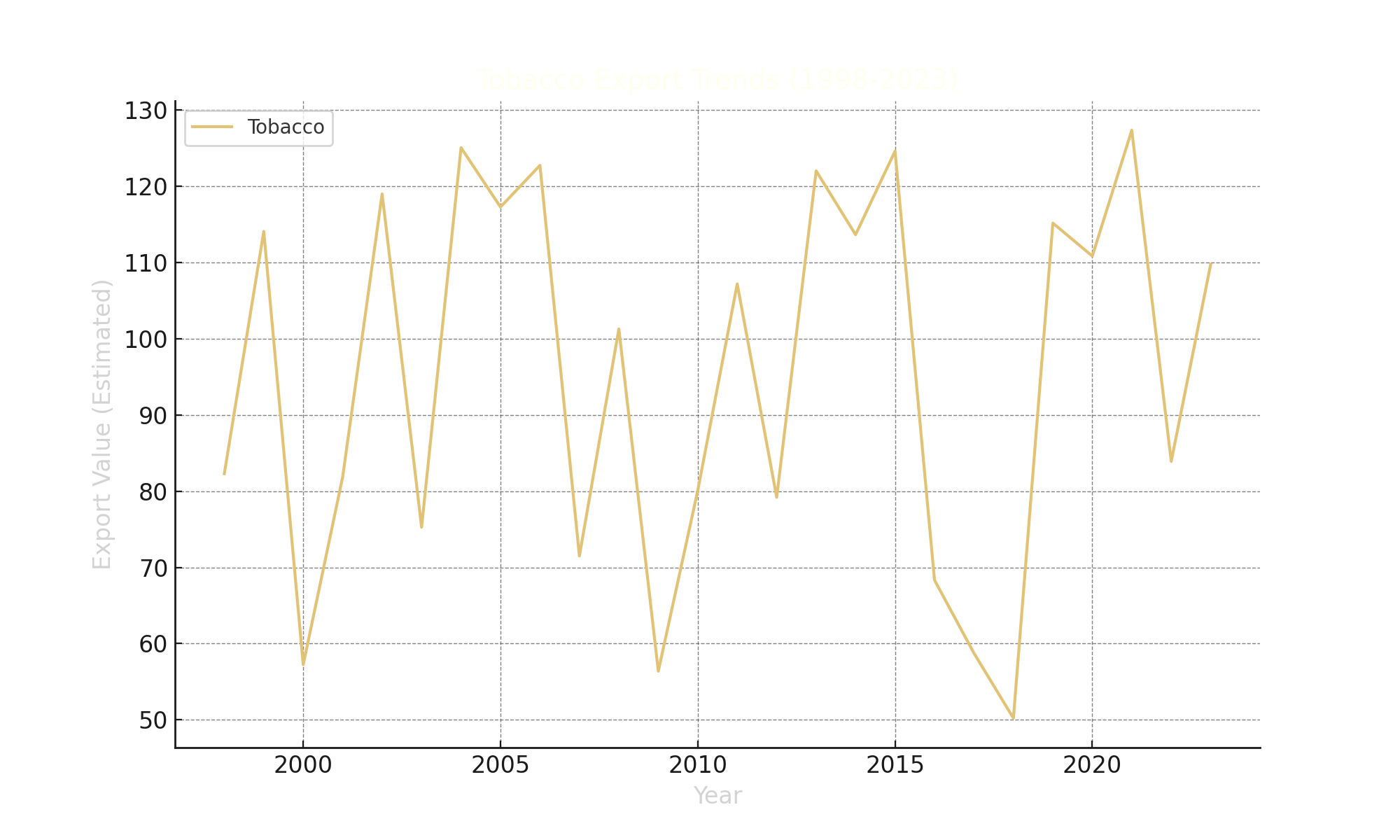
Tobacco exports have fluctuated significantly due to shifting market preferences and regulatory changes. Despite challenges, tobacco remains an important export commodity.
Clove Export Trends
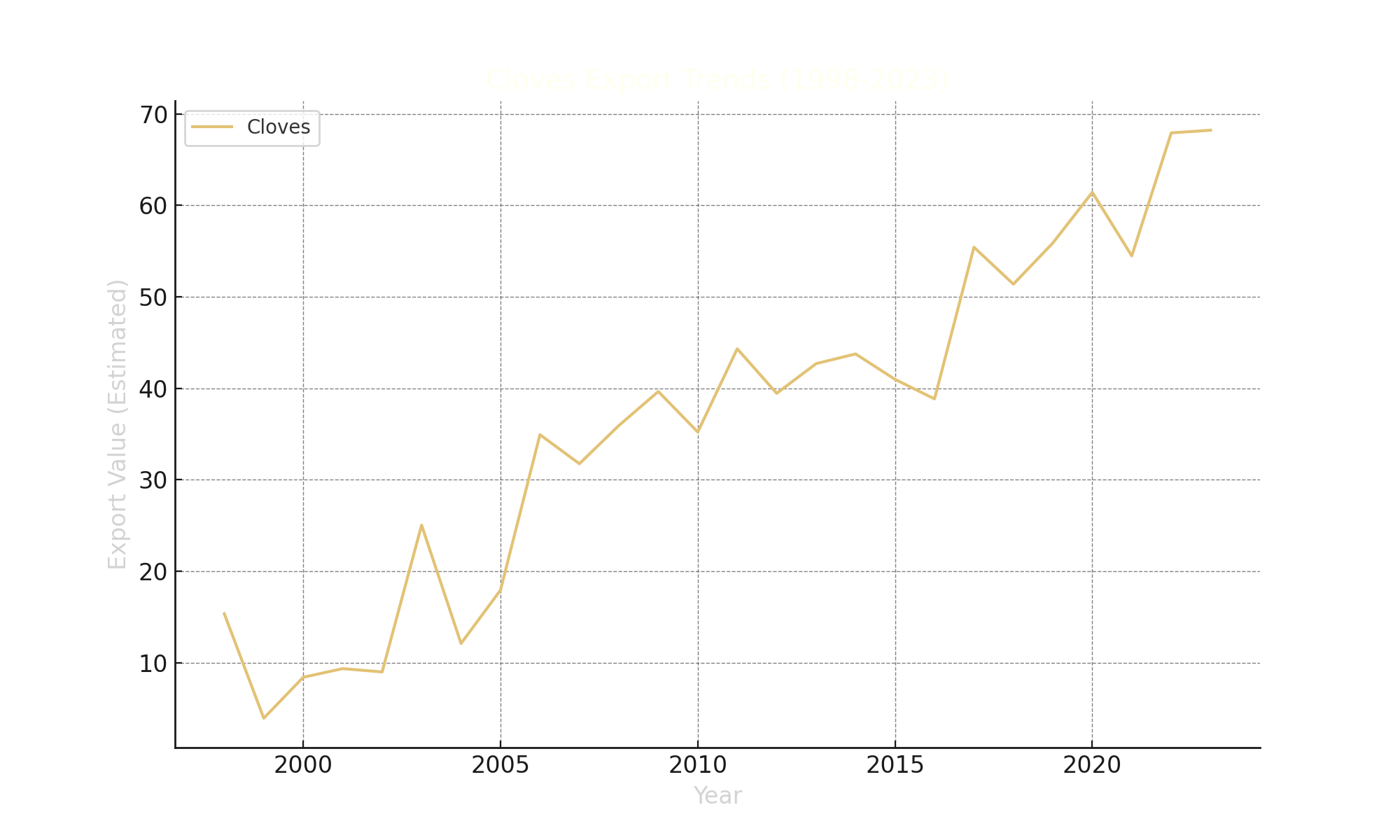
Clove exports are characterized by periodic spikes. Expanding market access and improving quality standards could further increase their contribution to exports.
Conclusion and Implications
Tanzania's agricultural sector demonstrates resilience and adaptability in a competitive global market. However, targeted investments in production efficiency, value addition, and trade infrastructure are critical for sustainable growth. Policymakers must focus on mitigating market risks and enhancing competitiveness to secure the sector's future.
